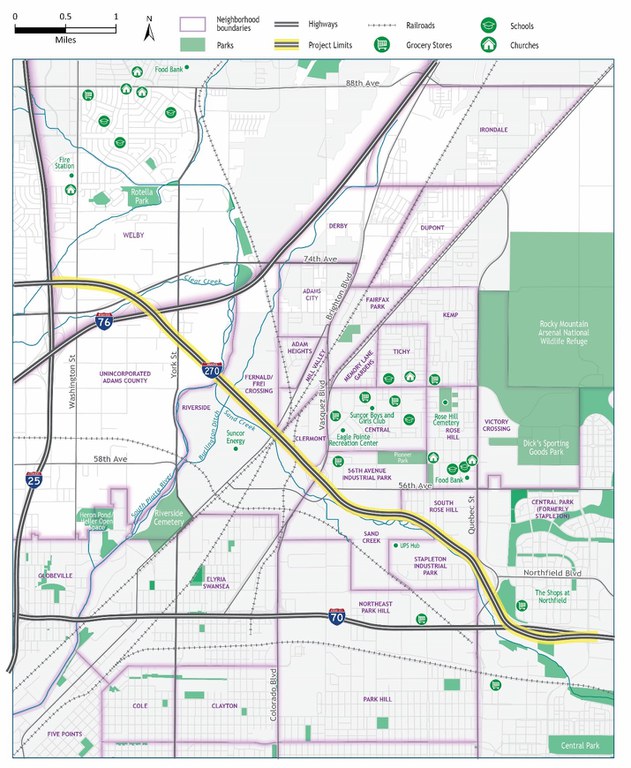I-270 Corridor Improvements Study
Project Update
The Draft Environmental Impact Statement (DEIS) is now available for review along with appendices covering various technical reports and three supplemental state reports. Visit the DEIS page to review the document in its entirety or specific sections of interest and provide comments.
About the Project
Interstate 270 (I-270) runs from Adams County towards Boulder County in Commerce City and North Denver. Every day, more than 100,000 vehicles travel the highway. Depending on location, 8 to 17% of its daily traffic is freight trucks. The congested interstate carries far more traffic than it was designed for. The pavement and bridges are stressed by the traffic loads, and emergency repairs are needed regularly. The corridor also lacks safe and efficient walking, cycling, and public transportation options for residents and businesses near the highway.
Culturally diverse neighborhoods surround the I-270 corridor and rely on and are affected by the interstate. Residents and other groups have raised concerns that communities in the study area experience high environmental burdens.
The Colorado Department of Transportation (CDOT) and the Federal Highway Administration (FHWA) began a National Environmental Policy Act (NEPA) process in 2020, initially anticipating an Environmental Assessment. Moving into 2023, CDOT determined a more detailed environmental review was needed and requested an Environmental Impact Statement (EIS) be initiated. A Notice of Intent was published in August 2024. The NOI begins the two-year timeline to complete the National Environmental Policy Act (NEPA) process. CDOT welcomes additional project comments through the online feedback portal on our website or via project email. Comments are also shared with FHWA.
Schedule & Important Dates
- Draft Environmental Impact Statement (DEIS): Published Nov. 21, 2025. Public comment period will take place through Jan. 20, 2026
- DEIS Public Engagement:
Refer to the I-270 calendar page for full details. - DEIS Public Hearings at Adams City High School, 7200 Quebec Parkway in Commerce City:
1.) Thursday, Jan. 8, 2026 from 5 to 8 p.m.
2.) Saturday, Jan. 10, 2026 from 9 a.m. to noon
3.) Tuesday, Jan. 13, 2026 from 5 to 8 p.m. - DEIS Informational Webinars from 5 to 6 p.m.:
1.) Wednesday, Jan. 7, 2026 (online)
2.) Thursday, Jan. 15, 2026 (online) - Environmental Study Completion: Fall 2026
I-270 Corridor Improvements Study Area

A map of the project area with the project limits highlighted in yellow along I-270 from I-25 to I-70.
The purpose of the I‐270 Corridor Improvements project is to:
- Implement transportation solutions that modernize the I-270 corridor to accommodate existing and forecasted transportation demands.
The identified transportation needs are as follows:
- Traveler safety on the corridor
- Travel time and reliability on the corridor
- Transit on the corridor
- Bicycle and pedestrian connectivity across I-270
- Freight operations on the corridor
In addition to addressing project needs, CDOT, the Federal Highway Administration (FHWA), and participating agencies have established a key project goal: to minimize environmental and community impacts resulting from the project. The project planning and decision-making process will consistently remain mindful of this environmental goal.
